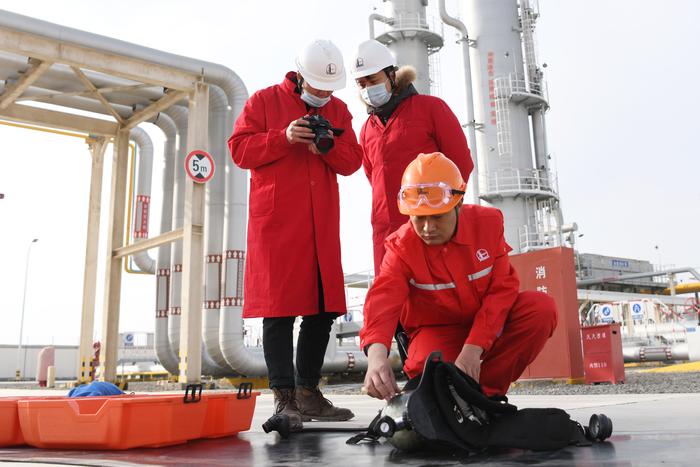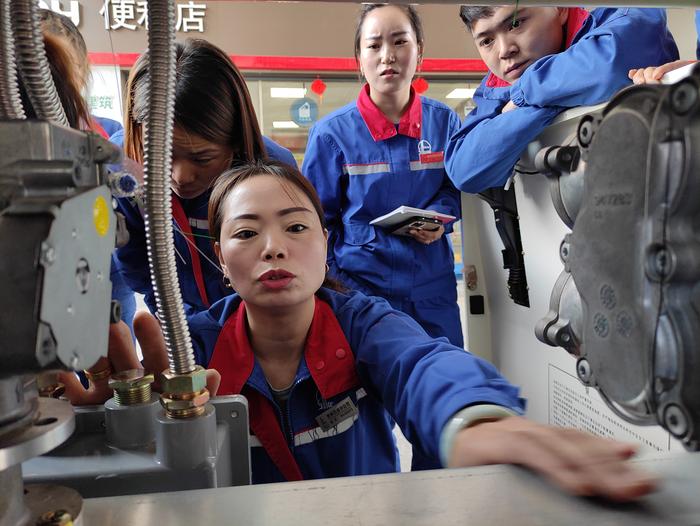|
| 2020-11-26 来源: 中国石化新闻网 |
| 石化新闻 |
中国石化新闻网讯 据ICIS-MRC网站11月20日莫斯科报道,IHS Markit石油市场、中下游化学品部门全球副总裁Mark Eramo表示,新冠疫情时期将被视为“全球能源转型的拐点”。 Eramo在以虚拟形式举行并由IHS Markit主办的2020年化学工业金融展望和可持续性论坛会上表示,新冠疫情对能源消费脱碳的影响“导致了与过去相比的更快的变化速度。 Eramo称,石油需求峰值现在可能已经出现。我们相信新冠疫情已经将石油需求重置在较低水平。 随着人们从家里开始工作——即使在我们接种了疫苗并恢复正常之后——我们正在考虑2019年可能是世界石油需求的顶峰的情况,这取决于我们是否回到通勤、乘坐汽车、火车或飞机,以及所有这些都恢复的程度。油价低于50美元/桶可能会持续到2021年中期,在需求开始缓慢调整供过于求的局面之前,预计到今年年底和2021年油价会“缓慢稳定上涨”。 他说,能源转型也是炼油行业战略重组的核心,而疫情加速了这一重组。他指出,重组过程将影响石化行业,因为炼油行业提供原料,而“石化与炼油的整合也重新成为关注焦点”。 根据Eramo的说法,正在研究整合机会的公司面临着诸如高资本和进入成本之类的问题。 他说:“如果我经营的是炼油资产,并希望将石化产品视为未来增长的一种手段,我的入门成本是多少。” 他说,这是一个已经在中国进行的过程。 他指出,每桶石油的化学产率随时间的推移从不到15%上升到如今正在建设或运营中的资产每桶可以产生40-80%的水平。 这整合趋势也是由“由炼油业和上游和中游市场的石油公司推动的峰值石油的这种说法所驱动的,它们将石油化工视为潜在的增长工具。 因为,在石油峰值的世界里,你可以看看我们认为将继续以非常合理的GDP倍数增长的石化产品。 IHS Markit预计,全球化学品需求将在2021年“迅速回升”,随后将经历一段类似2009-2011年全球经济危机后的稳定时期。Eramo说,随着供应链的重新补充,预计2021年将出现强劲增长,之后还会有一段每年稳定增长1500万至2000万吨的时期。 他强调,乙烯作为一种产品预测,“今年实际上会有一些增长,其中很大一部分是受个人防护设备(PPE)增长的刺激,以及防护设备的健康和卫生处理,这创造了强劲的需求。”Eramo表示,从家里办公的转变,以及送货上门所需的包装增加,表明“许多不同的激励措施在这里发挥作用”。 IHS Markit高级副总裁兼首席经济学家纳里曼·贝拉维什(Nariman Behravesh)也在虚拟会议上表示,全球经济正面临“反弹、衰退和艰难的局面”。“我们的意思是,无论如何,我们在第三季度看到的增长时刻是不可持续的,增长率为30%。预计第四季度这一水平将降至4-5%。他说:“过去有被抑制的需求,但现在已经被释放出来,现在差不多完成了。大刺激的可能性微乎其微,再加上疫情本身。所有这些都表明,未来几个季度的情况不会很好。” 据Behravesh预测,2020年全球GDP将萎缩4.5%,2021年可能恢复到增长4.0%。今年美国GDP预计将下降3.5%,而欧元区GDP预计将下降7.5%。他表示,在财政和货币政策方面,欧洲(不如美国)积极得多,这对随后的经济好转(或缺乏好转)产生了巨大影响。 预计2021年美国GDP将增长3.0-3.5%,并在2022年上半年达到大流行前的水平,而欧元区将在2023年初出现交叉。他指出,欧洲的复苏不会是一致的。德国预计将在2022年恢复到疫情前的GDP水平,而意大利预计要到2026年才能达到这一水平。 郝芬 译自 ICIS-MRC 原文如下: COVID-19 period an inflection point for energy transition The COVID-19 period will be viewed “as an inflection point for the global energy transition,” according to Mark Eramo, global vice president/oil markets, midstream, downstream, chemicals at IHS Markit. The impact of the pandemic going forward on the decarbonization of energy consumption “causes a faster pace of change, versus what we’ve seen in the past,” said Eramo, speaking at the Chemical Industry Financial Outlook & Sustainability Forum 2020, being held in a virtual format and hosted by IHS Markit. Peak oil demand may also now have taken place, Eramo says. “We believe COVID-19 has reset oil demand at a lower level. With the move to work from home—even after we get a vaccine and get back to normal—we’re looking at scenarios where 2019 could be that peak in world oil demand, depending on whether we return to our commutes, by car, train, or plane, and the degree that all that comes back.” Oil demand in 2020 is forecast by IHS Markit to be about 94 million b/d, well down on the 2019 total of just more than 100 million b/d. Oil prices of below $50/bbl are likely to remain through mid-2021, with a “slow steady increase” to the end of this year and into 2021 expected, before demand starts slowly to correct the oversupply situation, Eramo says. The energy transition is also at the heart of a strategic restructuring of the refining sector, which has been accelerated by the pandemic, he says. The restructuring process will impact the petrochemical industry, because of the feedstocks that the refining sector supplies, while “petrochemical integration with refining is also back in focus,” he notes. Companies examining opportunities for integration are faced with issues such as high capital and the cost of entry, according to Eramo. “If I’m running a refining asset and want to view petrochemicals as a means for growth in the future, what’s my cost of entry to do that,” he says. This is a process already taking place in China, he says. Chemical yields per barrel of oil have risen over time from less than 15% to a point where assets under construction or operating today can yield 40-80% per barrel, he notes. The integration trend also is being driven by “this narrative of peak oil, driven by the refining industry and those in the upstream and midstream markets looking at petrochemicals as a potential vehicle for growth. Because, in a peak oil world, you can look at petrochemicals that we believe will continue to grow at a very reasonable multiple of GDP,” Eramo says. For global chemicals demand, IHS Markit sees a “snapback” in 2021, followed by a settling period similar to that seen in 2009-11 following the global economic crisis. Strong growth in 2021 is expected as supply chains are refilled, before there is a period of steady growth of 15-20 million metric tons annually, Eramo says. He highlighted ethylene as a product forecast to “actually see some growth this year, a lot of it stimulated by the growth in PPE [personal protective equipment], as well as the health and sanitization for protective gear, that is creating strong demand.” The shift to work from home and increased packaging required for goods being delivered to homes shows there are “a lot of different stimulus at work here,” Eramo says. The global economy is facing a “bounce, fade, and slog scenario,” said Nariman Behravesh, senior vice president and chief economist at IHS Markit, also speaking at the virtual event. “By that we mean that, in any event, the moment of growth that we saw in the third quarter was unsustainable, with growth rates of 30%.” The level is expected to come down to 4-5% in the fourth quarter, he says. “There was pent up demand, but that has been released and is now pretty much done. There’s very little prospect of big stimulus, and then there’s the virus itself. All this suggests that the next few quarters are not going to be good." Global GDP is forecast to shrink by 4.5% in 2020, before recovering to possible growth of 4.0% in 2021, according to Behravesh. While US GDP is expected to decline by up to 3.5% this year, GDP in the eurozone is forecast to plunge by 7.5%. “Europe has been much less aggressive [than the US] in terms of fiscal and monetary policy, and I think that has made a huge difference in the subsequent upturn, or lack thereof,” he says. US GDP is expected to grow by 3.0-3.5% in 2021 and cross over to pre-pandemic levels during the first half of 2022, and the eurozone is looking at a crossover at the beginning of 2023, he says. The recovery in Europe will not be uniform, he notes. Germany is expected to return to pre-pandemic GDP levels in 2022 and Italy is forecast not to reach that point until 2026. |








